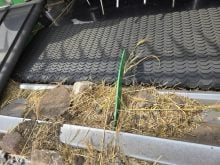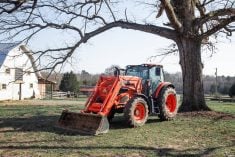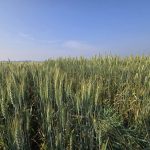Frost or not, livestock feeders aren’t worried about getting feed grain.
There’s lots of corn in the United States and a chance of frost-damaged hard red spring wheat in Canada becoming available.
That’s the reason Statistics Canada’s low barley production estimate didn’t stop the downward price path of prairie barley, brokers say.
“Demand is lower and we’ve got the giant to the south of us with a huge corn crop,” said Calgary grain broker Doug Chambers of Quality Grain.
Read Also

Basket rakes pitched for top-quality windrows
Boxy, clean windrows help make better hay bales for livestock farms and forage growers, and a basket rake excels in those areas, says Bart Elder of Vermeer.
“A lot of farmers are looking at (the StatsCan estimate of 8.95 million tonnes of barley compared to 2008’s 11.78 million) and getting very bullish, but in 10 months time there are probably going to be a lot of farmers with a fair bit of barley in the bins.”
Hog producers are cutting back on grain purchases for this fall – many are leaving the business – and cattle feeders in Alberta’s feedlot alley have already booked Minnesota corn for some of their needs.
The barley crop may be smaller than last year, but some feeders expect to soon be able to buy hard red spring wheat that suffers frost damage.
“When the combines get moving, that will move the market lower still,” said Chambers.
On Aug. 24, Lethbridge was paying $160 per tonne delivered for barley. Chambers said that might drop to about $150 by the end of the week.
In June and July barley prices flirted with $200, but have fallen steadily since.
However, weather conditions have created some unusual markets for farmers in areas with a feed shortage. Chambers said he sold barley into Tofield, Alta., for $158 on Aug. 24, which was only a $2 discount to Lethbridge. Usually there’s a $10 or more discount for the Edmonton area.
“That’s pretty amazing,” said Chambers.
Farmers need to look for sales in areas that have poor pasture and forage.
The StatsCan report predicted a 16.15 million tonne wheat crop, down from last year’s 18.4 million tonnes, but it drew little attention from American or international grain traders. The smaller Canadian crop is offset by what appears to be a better than expected U.S. hard red spring wheat crop.
Canadian Wheat Board crop conditions analyst Bruce Burnett said the true state of the U.S. spring wheat crop is impossible to gauge.
“With so little in, it’s hard to know,” said Burnett. Winter wheat is being harvested in the Dakotas and appears to be good quality, but little spring wheat has been harvested.
About three weeks of good weather are needed to mature most of the prairie crop, and average first frost dates for some areas appear at the end of August. There already has been scattered frost north of Edmonton.
– WHITE

















